| |
 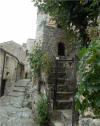  From 1910 to 1916 Padre Pio spent most of his time in poor
health at home in Pietrelcina. Since he was ordained and was inappropriate for him to
live in the family home, instead of the convent, the parents prepared
for him a single room up on a steep flight of stair, called "La Torretta"
(the little tower). It was located close to his parents in Crooked
Valley Lane 1.
From 1910 to 1916 Padre Pio spent most of his time in poor
health at home in Pietrelcina. Since he was ordained and was inappropriate for him to
live in the family home, instead of the convent, the parents prepared
for him a single room up on a steep flight of stair, called "La Torretta"
(the little tower). It was located close to his parents in Crooked
Valley Lane 1.
La Torretta (The little tower) is a one room dwelling, to which one can get
climbing steep stairs. A table, a bed, a window. |
| |
      It was very hard for Padre Pio in poor health
to climb the steep steps of La Torretta.
It was very hard for Padre Pio in poor health
to climb the steep steps of La Torretta.
The last picture shows La Torretta as it was at the times of Padre Pio
living there. |
| |
       Nearby in Via Sant'Anna 2, there was the maternal
house, were the Forgiones lived in their first year of marriage.
Nearby in Via Sant'Anna 2, there was the maternal
house, were the Forgiones lived in their first year of marriage. |
| |
 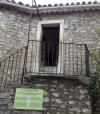    Above
the maternal house, with the entrance in Via Sant'Anna 44, there was the
home of Padre Pio's brother Michele, empty because he had temporarily
migrated to America. It had a lower room and an upper room. Padre Pio
moved to the upper room from La Torretta. Above
the maternal house, with the entrance in Via Sant'Anna 44, there was the
home of Padre Pio's brother Michele, empty because he had temporarily
migrated to America. It had a lower room and an upper room. Padre Pio
moved to the upper room from La Torretta. |
| |




 In this room Padre Pio wrote letters
to his spiritual directors, had frequent apparitions of Jesus and other
heavenly beings, and was tormented by the devil with multiple
temptations.
In this room Padre Pio wrote letters
to his spiritual directors, had frequent apparitions of Jesus and other
heavenly beings, and was tormented by the devil with multiple
temptations.
|
| |
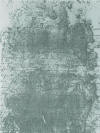  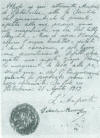
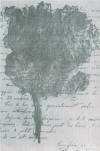 The archpriest Salvatore Pannullo spent many
evenings visiting with Padre Pio. He reported some of what he saw. The
first letter when opened was totally illegible (the devil had stained
it). They sprinkled holy water and put a Crucifix on it. After that it
was still stained, but legible. Pannullo called in his niece Grazia, who
was a teacher, and she was able to read every word of it. Few years
later, on August 25, 1919 gave the written sworn statement explaining
what happened.
The archpriest Salvatore Pannullo spent many
evenings visiting with Padre Pio. He reported some of what he saw. The
first letter when opened was totally illegible (the devil had stained
it). They sprinkled holy water and put a Crucifix on it. After that it
was still stained, but legible. Pannullo called in his niece Grazia, who
was a teacher, and she was able to read every word of it. Few years
later, on August 25, 1919 gave the written sworn statement explaining
what happened.
The last picture shows another stained letter,
written in French to Padre Pio by is spiritual director to see if it was
true what Padre Pio claimed that the Guardian Angel translated the
letters for him. The Guardian Angel translated it to him, despite
the stains, and Padre Pio wrote back to his spiritual director about the
content of the letter. |
| |



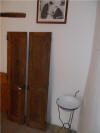
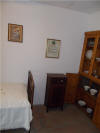
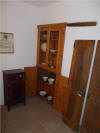
The lower room was used by Mary Pyle from October 1941 to December 1943,
to oversee the construction of the convent and church of the Holy
Family. |
| |



 Padre
Pio lived in "Rione Castello" (Castle district), a medieval
conglomerate of dwellings built on a elevation called "La Morgia." When
he was in San Giovanni Rotondo he would say to the visitors from
Pietrelcina
"Say hi to La Morgia." Padre
Pio lived in "Rione Castello" (Castle district), a medieval
conglomerate of dwellings built on a elevation called "La Morgia." When
he was in San Giovanni Rotondo he would say to the visitors from
Pietrelcina
"Say hi to La Morgia." |
| |
 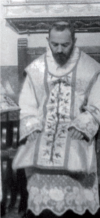   On August
14, 1910 Padre Pio celebrated his 'First Solemn Mass in the parish church of
Our Lady of the Angels in Pietrelcina'. On August
14, 1910 Padre Pio celebrated his 'First Solemn Mass in the parish church of
Our Lady of the Angels in Pietrelcina'.
Padre Agostino said in the
sermon: “You are in poor health so you can’t be a preacher. I wish you
to be a great confessor.”
He was a prophet. |
| |
   
 During his stay in Pietrelcina celebrated Mass in
the parish church of Saint Mary of the angels, were he also helped with
the confessions and other sacred functions. He had numerous ecstasies
during Mass, and also experienced the mystical fusion of the hearths
with Jesus, as he reported in a letter on April 18, 1912:"The heart of Jesus and mine were no more two
hearts beating, but only one. My heart had disappeared , like a drop of
water disappearing in the ocean."
During his stay in Pietrelcina celebrated Mass in
the parish church of Saint Mary of the angels, were he also helped with
the confessions and other sacred functions. He had numerous ecstasies
during Mass, and also experienced the mystical fusion of the hearths
with Jesus, as he reported in a letter on April 18, 1912:"The heart of Jesus and mine were no more two
hearts beating, but only one. My heart had disappeared , like a drop of
water disappearing in the ocean."
|
| |
   In the church there is a reliquary with relics of
Padre Pio.
In the church there is a reliquary with relics of
Padre Pio. |
| |
 
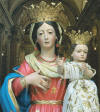 In the church is venerated the Madonna della
Libera, the patron saint of Pietrelcina, with huge yearly celebrations. In the church is venerated the Madonna della
Libera, the patron saint of Pietrelcina, with huge yearly celebrations. |
| |
_small.jpg) 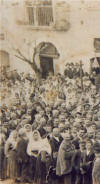 
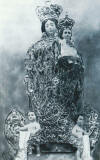  These pictures are from the times of Padre Pio. These pictures are from the times of Padre Pio.
The Madonna della Libera was adorned with gold donated by the faithful,
and taken in procession through the streets of Pietrelcina.
The last picture was taken on December 3, 1921. |
| |

 The
"Pantaniello" well is located in the very center of Pietrelcina. Padre Pio
passed frequently by it. The
"Pantaniello" well is located in the very center of Pietrelcina. Padre Pio
passed frequently by it. |
| |
 


 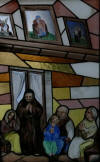
 Porta
Madonnella was the old medieval entrance to Pietrelcina. The religious
ensemble has the Madonna at the center, and St. Michael and St. Anthony
on the sides. Padre Pio stopped by frequently, and gathered people
reciting the Rosary with them. It may be considered the birthplace of
Padre Pio's "Prayer Groups". Porta
Madonnella was the old medieval entrance to Pietrelcina. The religious
ensemble has the Madonna at the center, and St. Michael and St. Anthony
on the sides. Padre Pio stopped by frequently, and gathered people
reciting the Rosary with them. It may be considered the birthplace of
Padre Pio's "Prayer Groups". |
| |






 To
get to Piana Romana it takes about an hour of a steep walk on a dirt
lane. Padre Pio walked it in
childhood to pray and graze the sheep, and later as a Capuchin friar to
pray and meditate on Jesus Passion. To
get to Piana Romana it takes about an hour of a steep walk on a dirt
lane. Padre Pio walked it in
childhood to pray and graze the sheep, and later as a Capuchin friar to
pray and meditate on Jesus Passion. |
| |
 A view of Pietrelcina from the road to Piana
Romana.
A view of Pietrelcina from the road to Piana
Romana. |
| |




Padre
Pio had to pass through a little bridge "Il ponticello" were he
frequently found standing the devils trying to scare him. |
| |
 In Piana Romana the Forgiones had their patch of land to cultivate, and
a one room "Masseria" were they kept the tools and slept when needed.
In Piana Romana the Forgiones had their patch of land to cultivate, and
a one room "Masseria" were they kept the tools and slept when needed. |
| |


 On the property there were two large stones that
Padre Pio called
"Il Seggiolone" (the high chair, or the big chair). Padre Pio spent
many hours kneeling or sitting on them in meditation and prayer.
On the property there were two large stones that
Padre Pio called
"Il Seggiolone" (the high chair, or the big chair). Padre Pio spent
many hours kneeling or sitting on them in meditation and prayer. |
| |


 In Piana Romana Padre Pio's father built a
shelter, under an elm tree, so that he could spend in the shade the many
hours of prayer. On September 20, 1918 Padre Pio
received the permanently visible Wounds, In San Giovanni Rotondo. In Piana Romana Padre Pio's father built a
shelter, under an elm tree, so that he could spend in the shade the many
hours of prayer. On September 20, 1918 Padre Pio
received the permanently visible Wounds, In San Giovanni Rotondo.
In reality he had received the Wounds years before. On the afternoon of
September 7, 1910, few weeks after being ordained
priest, while he was praying under the elm tree, Jesus and Mary appeared and gave him the wounds. Padre Pio considered always September 7, 1910, the date he received the
wounds.
|
| |

 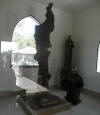
 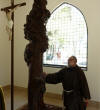 A chapel has been built around the stump of the
elm tree.
A chapel has been built around the stump of the
elm tree. |
| |
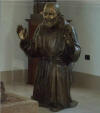
Salvatore Pannullo, pastor of the Parish in Pietrelcina
testified that in 1910 Padre Pio showed him the wounds
and told him : "Father, do me a favor. Let's ask Jesus to take them away. I want to
suffer, to die from suffering, but in secret." They prayed together, and God
answered their prayer. The wounds disappeared and the suffering continued.
When Pannullo was told in 1918 that the wounds had appeared on
Padre Pio, he replied: You see the now. I saw them in 1910."
In a letter to fra Benedetto, his spiritual director, dated
September 8, 1910, Padre Pio wrote:
"Yesterday evening some red spots appeared in the middle of my hands with
sharp pain." When years later Padre Pio recalled those
events he would say:
"Jesus has been there. All has happened there."
|
| |
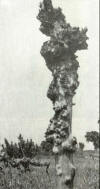 The remains of the elm tree, damaged by souvenir
seekers, before the chapel was built around it,
The remains of the elm tree, damaged by souvenir
seekers, before the chapel was built around it, |
| |

 A large church has been built in the area of the "Masseria
Forgione".
A large church has been built in the area of the "Masseria
Forgione". |
| |

 One day Zi' Grazio was digging a well, but he couldn't
find water. Francesco told him that if he wanted to find water he had to
dig in a different spot, indicating it to him. Zi' Grazio did, and the
water came out.
One day Zi' Grazio was digging a well, but he couldn't
find water. Francesco told him that if he wanted to find water he had to
dig in a different spot, indicating it to him. Zi' Grazio did, and the
water came out. |
| |

 The Forgiones' piece of land.
The Forgiones' piece of land. |
| |
 The
group picture shows the Company of Padre Pio in military uniform.
Padre Pio is at the far lower right. The
group picture shows the Company of Padre Pio in military uniform.
Padre Pio is at the far lower right. |
| |
 On November 6, 1915 Padre Pio was drafted, at age
28. On December 6, 1915 the recruit #12094, was assigned to the 10th
Company of Health in Naples. On December 17, 1915 a medical consultation
diagnoses 'pulmonary infiltration', and grants 1 year of convalescent
leave.
On November 6, 1915 Padre Pio was drafted, at age
28. On December 6, 1915 the recruit #12094, was assigned to the 10th
Company of Health in Naples. On December 17, 1915 a medical consultation
diagnoses 'pulmonary infiltration', and grants 1 year of convalescent
leave.
|
| |
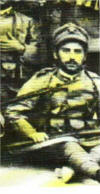 He served in the Italian Army from 1915 to 1918. He spent most of the
time on sick leave.
He served in the Italian Army from 1915 to 1918. He spent most of the
time on sick leave. |
| |
Venafro |
| |
 Padre Pio's health was not good. On October 1911,
after a physical examination by the famous dr. Antonio Cardarelli in Naples, he was
sent for convalescence to Venafro. Padre Pio's health was not good. On October 1911,
after a physical examination by the famous dr. Antonio Cardarelli in Naples, he was
sent for convalescence to Venafro. |
| |
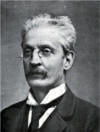 According to the diagnosis of the celebrated physician, the young
friar's days were numbered, and he couldn't travel long distances, which
is why he was sent to Venafro location of the
closest convent.
According to the diagnosis of the celebrated physician, the young
friar's days were numbered, and he couldn't travel long distances, which
is why he was sent to Venafro location of the
closest convent.
|
|


 During the month and a half stay in the convent
of San Nicandro, October - November 1911, the community noticed
the first supernatural phenomena: divine ecstasies lasting up to one
hour, and diabolic apparitions lasting a few minutes. During the month and a half stay in the convent
of San Nicandro, October - November 1911, the community noticed
the first supernatural phenomena: divine ecstasies lasting up to one
hour, and diabolic apparitions lasting a few minutes. |
| |
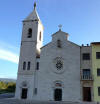




 In Venafro, from Padre Agostino's diary: 'Starting in November
1911, I was present with Padre. Evangelista, the superior of the monastery, for a
considerable number of ecstasies, and many instances of demonic oppression."
Satan would appear as a nude woman dancing lewdly, as is spiritual father,
as his superior, pope Pius X, his guardian angel, St. Francis, the Virgin
Mary, and also as the horrible self, with an army of demonic spirits. At times there were no apparitions but he was beaten until he
bled, tormented with deafening noises, covered with spit. He was able to free himself from the torments by calling on
the name of Jesus."
In Venafro, from Padre Agostino's diary: 'Starting in November
1911, I was present with Padre. Evangelista, the superior of the monastery, for a
considerable number of ecstasies, and many instances of demonic oppression."
Satan would appear as a nude woman dancing lewdly, as is spiritual father,
as his superior, pope Pius X, his guardian angel, St. Francis, the Virgin
Mary, and also as the horrible self, with an army of demonic spirits. At times there were no apparitions but he was beaten until he
bled, tormented with deafening noises, covered with spit. He was able to free himself from the torments by calling on
the name of Jesus." |
| |


 Padre Pio always distinguished the devil's apparitions from
the heavenly visions by asking: "Say Long Live Jesus." (Ripeti
'Viva
Gesù). If it was the devil, he would disappear.
Padre Pio always distinguished the devil's apparitions from
the heavenly visions by asking: "Say Long Live Jesus." (Ripeti
'Viva
Gesù). If it was the devil, he would disappear. |
| |
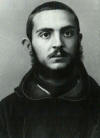 This picture was taken in Venafro as a keep-sake
memento, when it was believed that Padre Pio's days were numbered. This picture was taken in Venafro as a keep-sake
memento, when it was believed that Padre Pio's days were numbered.
He was 24 years old. |
| |
High fevers |
| |

Padre Pio had long bouts of high fevers, followed by normal
temperatures. Padre Pio himself described the experience as a
"moral, rather than a physical, illness" and said it was like he was
"in a furnace, still
always conscious".
A friar attested that "even under the strain of this fever, Padre Pio is not knocked down, but gets up, moves
about, and can do everything."
The body temperature was taken by mercury thermometer, today no longer in common use. Normal body temperature is 98.2°F (or 36.8°C).
A temperature at or above about 104 °F (40 °C) requires treatment.
Dr. Giorgio Festa in 1920 took Padre Pio's temperature as part of
his investigation. The reading was 48.5 C . In 1921 Father Lorenzo, superior of the convent, testified under oath
to Mons. Rossi that he
was skeptical, and had personally witnessed and recorded Padre Pio with fevers of 43C (109.4F) degrees Fahrenheit, then 45C
(113F) degrees, and finally 48C (118.4F) degrees.
|
| |
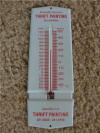
On December 1915 at the Trinity Military Hospital in Naples, during a
routine physical,
Padre Pio's temperature was taken by dr. Giuseppe Grieco,
lieutenant
medical doctor in the Italian Army, with a armpit mercury thermometer. In less than
one minute the thermometer cracked,
having gone over the maximum
temperature of 42C (107.6). Three other thermometers cracked the same
way. Dr. Grieco called in a colleague dr. Francesco Melle.
They decided to try with a bath thermometer, removed from the
casing that could read up to 80C (176F). The thermometer read 48C
(118.4).
They couldn't believe it, so they tried with a laboratory precision
thermometer. This time the temperature was 49C (120.2).
They decided to inform the captain prof. dr.
Felice D'Onofrio, chief of medical services. He came in,
measured again, and the reading was 49C.
"This is a mystery. This is impossible. I can't believe my
eyes. He should be in agony. This man is either a saint or a devil." He prescribed quinine and went to see him in the morning. He took again the temperature and was 36.7C (98.06). "I don't
understand anything. Let's send him home to die in peace." He gave him a year of medical leave.
|
| |
Foggia |
| |


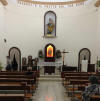 On February 17, 1916 Padre Pio went to the convent of St. Ann Foggia.
On February 17, 1916 Padre Pio went to the convent of St. Ann Foggia. |
| |
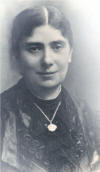 He visited daily
the spiritual daughter donna Raffaelina Cerase, gravely ill, until she
died on March 26, 1916.
He visited daily
the spiritual daughter donna Raffaelina Cerase, gravely ill, until she
died on March 26, 1916. |
| |
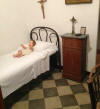
 The room of Padre Pio in the Saint Anna's
convent.
The room of Padre Pio in the Saint Anna's
convent.
At the convent Padre Pio continued to feel
sick: vomiting, sudden sweats, dizziness, and a very high fever. At night, terrifying noises came from
his room. They ended with a boom that would shake the walls and terrorize
the other friars. He wrote to Padre Benedetto that it was
the devil who, unable to win, exploded in fits of rage.
|
| |
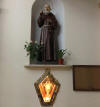
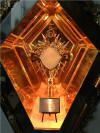
 Statue and relics of Padre Pio in the church in
Foggia.
Statue and relics of Padre Pio in the church in
Foggia. |
| |
Padre Pio
stayed in Foggia until September 4, 1916. On that day he
moved to
the convent of San Giovanni Rotondo.
On December 18, 1916 he returns to the Military hospital.
On December 30, 1916, new medical consultation.
He was granted 6 months
of sick leave. On September 4, 1917, he started training in the
Military Hospital of Naples. On November 5, 1917, 6 more months of medical leave. |
| |
Discharge from the Italian Army |
| |

  On March 6, 1918,
Padre Pio went back in the military hospital, after a year of sick leave. On March 6, 1918,
Padre Pio went back in the military hospital, after a year of sick leave.
On March 16, 1918 he
was discharged for medical reason for "double broncho alveolitis."
Padre Pio's certificate of honorable discharge from the
Italian Army.
The last picture shows Colonel Iannetta from Benevento military district
of he Italian Army donating to the
friars in Pietrelcina the original transcript of Padre Pio's military
service. |

 From 1910 to 1916 Padre Pio spent most of his time in poor
health at home in Pietrelcina. Since he was ordained and was inappropriate for him to
live in the family home, instead of the convent, the parents prepared
for him a single room up on a steep flight of stair, called "La Torretta"
(the little tower). It was located close to his parents in Crooked
Valley Lane 1.
From 1910 to 1916 Padre Pio spent most of his time in poor
health at home in Pietrelcina. Since he was ordained and was inappropriate for him to
live in the family home, instead of the convent, the parents prepared
for him a single room up on a steep flight of stair, called "La Torretta"
(the little tower). It was located close to his parents in Crooked
Valley Lane 1.




 It was very hard for Padre Pio in poor health
to climb the steep steps of La Torretta.
It was very hard for Padre Pio in poor health
to climb the steep steps of La Torretta. 




 Nearby in Via Sant'Anna 2, there was the maternal
house, were the Forgiones lived in their first year of marriage.
Nearby in Via Sant'Anna 2, there was the maternal
house, were the Forgiones lived in their first year of marriage. 

 Above
the maternal house, with the entrance in Via Sant'Anna 44, there was the
home of Padre Pio's brother Michele, empty because he had temporarily
migrated to America. It had a lower room and an upper room. Padre Pio
moved to the upper room from La Torretta.
Above
the maternal house, with the entrance in Via Sant'Anna 44, there was the
home of Padre Pio's brother Michele, empty because he had temporarily
migrated to America. It had a lower room and an upper room. Padre Pio
moved to the upper room from La Torretta.



 In this room Padre Pio wrote letters
to his spiritual directors, had frequent apparitions of Jesus and other
heavenly beings, and was tormented by the devil with multiple
temptations.
In this room Padre Pio wrote letters
to his spiritual directors, had frequent apparitions of Jesus and other
heavenly beings, and was tormented by the devil with multiple
temptations.

 The archpriest Salvatore Pannullo spent many
evenings visiting with Padre Pio. He reported some of what he saw. The
first letter when opened was totally illegible (the devil had stained
it). They sprinkled holy water and put a Crucifix on it. After that it
was still stained, but legible. Pannullo called in his niece Grazia, who
was a teacher, and she was able to read every word of it. Few years
later, on August 25, 1919 gave the written sworn statement explaining
what happened.
The archpriest Salvatore Pannullo spent many
evenings visiting with Padre Pio. He reported some of what he saw. The
first letter when opened was totally illegible (the devil had stained
it). They sprinkled holy water and put a Crucifix on it. After that it
was still stained, but legible. Pannullo called in his niece Grazia, who
was a teacher, and she was able to read every word of it. Few years
later, on August 25, 1919 gave the written sworn statement explaining
what happened. 




















_small.jpg)






























































